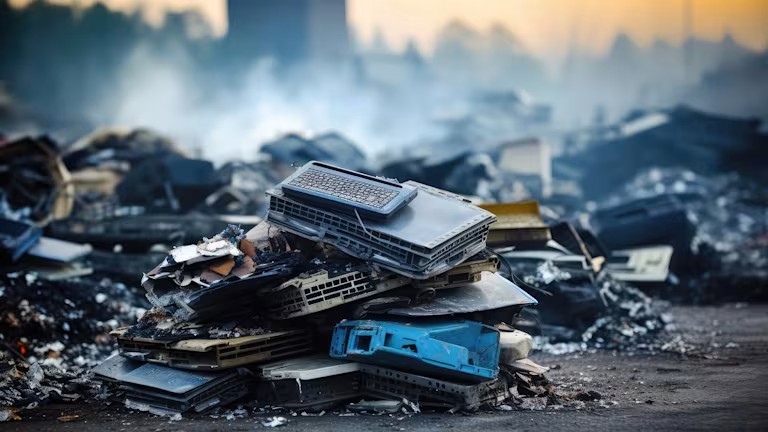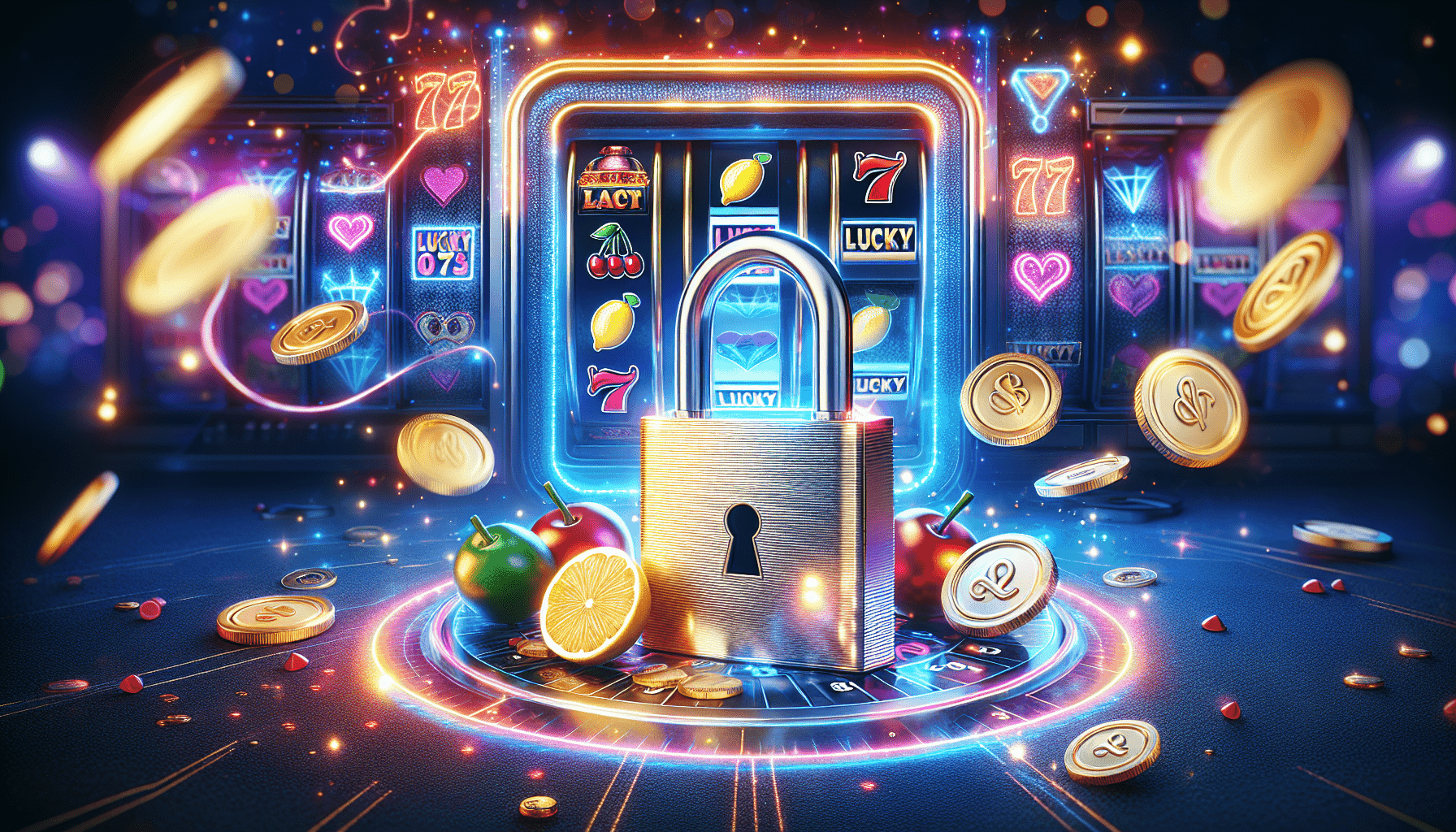Blog
girl:vpnixf9crvq= anime

Anime is more than just a form of entertainment. It’s a cultural phenomenon that has touched the hearts of people all over the world. With its long history and cutting-edge production technology, anime has something for everyone – whether you’re an otaku through-and-through or new to this captivating realm.
Introduction to Anime
Anime is a style of animation that originated in Japan and quickly spread across the globe. What sets it apart from other types of animation are its unique storytelling methods, vibrant art styles, and multi-dimensional characters. It’s not all about cartoons either; anime is a medium used to express profound emotions, convey complex narratives with universal themes.
The genre has had a huge impact on global pop culture, integrating seamlessly into different societies around the world. Fashion trends have been inspired by it; works of art reflect its influence while even schools use technology developed based on ideas borrowed from various animes themselves! So follow us on our journey through everything there is to know about anime – history included -, current trends within this subculture as well as those who support such passionate fandoms like ours!
History Of Anime
As far back as the early 1900s can be traced the roots of what we call anime today. Borrowing heavily from Western cartoons and traditional Japanese art forms such as manga (comics), this budding industry began taking shape. The word “anime” itself comes from an English abbreviation for “animation”, but over time it has come to represent something uniquely Japanese about animated storytelling.
One significant work in early anime was “Astro Boy” which came out during 1960s created by Osamu Tezuka – often called godfather or Walt Disney Japan because he pioneered techniques still being used today like large expressive eyes and episodic storytelling-. Since then though many things have changed: different styles have emerged; genres were introduced that resonated with wider audiences etcetera…
It’s hard to believe now looking back on all these years how much has happened but everything really started happening in the 80s and 90s. This was a pivotal time for anime – with such classics as Akira, Ghost in the Shell, and Neon Genesis Evangelion pushing boundaries of storytelling techniques along with improving animation quality (among other things). These films not only gained immense popularity within Japan but also attracted international viewerships laying foundation for globalizing anime.
Anime Today
Nowadays, there is no doubt that we are living in what could be called “the golden age” or “renaissance” of animes where they have never been more popular or accessible before. With platforms like Crunchyroll, Funimation, and Netflix boasting massive libraries filled to the brim with our favorite shows it’s easier now than ever to get your hands on them!
Some of the most well-received series across different genres include titles like Attack on Titan which follows humanity’s struggle against giant humanoid creatures who eat humans known as titans; My Hero Academia where individuals born without superpowers aspire towards becoming heroes themselves after inheriting their abilities from legendary hero All Might; Demon Slayer tells us about young boy named Tanjiro Kamado seeking revenge against demons responsible for killing his family.
For instance Globalization trends indicate that anime is not just another fad anymore. It has become part of mainstream culture across many countries around the world today so much so that even if you don’t watch any yourself odds are good someone close does!- From streetwear collaborations all way up into designer clothing lines; Mobile Games based off popular franchises such as Dragon Ball Z Dokkan Battle or Fate/ Grand Order etcetera.
Anime Fandom
The world of anime fans is something to behold – they’re passionate about their favorite shows, characters, voice actors — you name it. Thousands upon thousands express this love through fan art (drawing pictures), cosplay (dressing up as characters), attending conventions where people can meet and more.
Events like Anime Expo, Comic-Con, and Otakon attract massive crowds every year who come together for one thing: Anime. These conventions offer everything from panels (discussions) on various topics related to the genre; screenings of popular movies or series episodes; opportunities to meet voice actors who bring these characters alive with their performances – it’s truly an unforgettable experience for any fan!
Cosplay, a global phenomenon that has taken people by storm. People who participate in cosplaying go all out on their costumes, they spend time and money to create the most detailed and accurate representation of the character they are dressing up as. And it is because of this shared love for anime characters that makes this community so special.
Anime and Technology
Technology has played a huge role in the development of anime over the years. Digital animation has changed everything about how anime is made by allowing for more vibrant colors and sharper lines. Software like Adobe After Effects or Toon Boom Harmony lets animators add things such as lighting effects or camera movements into their work.
Online streaming services have also had a major impact on the anime industry itself. Crunchyroll and Funimation offer simulcasts which means that fans can watch new episodes within hours of them airing in Japan. This has made it possible for more people around the world to enjoy anime than ever before.
Virtual reality (VR) and augmented reality (AR) technology is just now starting to be used with anime. Games like “Sword Art Online VR” or “Attack on Titan AR” let players actually step into those worlds themselves while still being at home. These types of advancements could change everything about what we know as traditional television shows or movies today if they continue growing at such rapid rates.
The Future of Anime
What does the future hold for anime? It’s hard to say but there are some things worth considering when looking ahead. One trend that might become popular soon is using artificial intelligence within animation studios themselves; AI algorithms could help create more realistic movement patterns faster than human animators alone ever could have done before although this raises questions about job displacement along with other ethical concerns surrounding creativity.
Another area where improvement is needed involves sustainability within animating companies themselves since many artists currently work extremely long hours without receiving very much pay while also having little time left over outside these jobs which can lead to severe mental health issues over time so addressing these problems becomes necessary if the industry wants to remain healthy and thrive.
But despite these possible obstacles in its path, anime’s future seems bright indeed. The art form continues captivating audiences like no other and new technologies combined with global collaborations promise exciting things for years to come thus keeping animes alive as one of the most dynamic forms of entertainment ever experienced by mankind.
Conclusion
Anime is not just a form of media that people consume; it’s much more than that. Anime has touched the lives of many all around the world because from history filled tales down various genres and even passionate fans who will stop at nothing but create beautiful costumes based off their favorite characters – this blog post encompasses what makes anime special.
Whether you’re someone who has been watching anime for years or only just discovered it yesterday, there is always something new waiting for you within its vast library filled with thousands upon thousands of shows. What keeps bringing us back though? It could be said that storytelling itself lies at heart – emotions are easily brought out when we hear a good story being told before our eyes especially those moments where everyone gets together cheering for joy or crying their hearts out after seeing their heroes overcome insurmountable odds while also celebrating friendship along the way!
We hope you enjoyed this deep dive into everything related to Japanese animation! If need any recommendations or want explore further, feel free reach out us. Till then happy watching!
Blog
RS 149 Bear Jumpsuit – Adorable & Practical Babywear

When it comes to dressing your little one, comfort meets cuteness with the RS 149 Bear Design Long-Sleeve Baby Jumpsuit from The Spark Shop. Parents often find themselves stuck between an array of baby clothing options, but what stands out more than soft, stylish, and practical wear combined?
If you’re looking for a piece that combines adorable aesthetics with practical functionality, then this jumpsuit is going to be your new favorite. And guess what? It’s not just about the looks—it’s about ensuring your child stays comfortable throughout the day.
But why is this jumpsuit so special? Stick around, because I’m about to unpack all the reasons why this product could be your answer for style and ease in your little one’s wardrobe.
Key Takeaways
- “Bear Design” for added cuteness blended with a versatile look for every occasion.
- Soft, breathable fabric ensures your baby’s comfort all day.
- Perfect for every season due to its long-sleeve design.
- Easy care, durable material—because we know parenting is already enough work!
If finding a stylish yet simple-to-maintain outfit sounds like a dream, this jumpsuit checks all your boxes!
Product Features
When buying clothes for your baby, there are plenty of things to consider—skin sensitivity, durability, and of course, cuteness! The RS 149 Bear Design Jumpsuit delivers on all fronts.

Key Features Include
- Adorable Bear Motif: The cute bear design adds a playful charm, making this jumpsuit photo-ready for your baby’s milestones or everyday moments.
- Premium Fabric: Made from high-quality cotton to keep your baby snug while preventing any skin irritations.
- Easy Snap Closures: No stress during diaper changes—these easy snap buttons make your life so much easier!
- Durable Design: Built to last wash after wash while maintaining its softness and adorable look.
Imagine this jumpsuit becoming your little one’s go-to outfit for family outings, or a snuggly companion for those cozy at-home days.
Expert Insight: “For baby wear, it’s all about finding breathable fabric and avoiding harsh materials. Cotton is always my go-to for sensitive skin,” says pediatric fashion consultant Dr. Ananya Kapoor.
Size and Fit
Because babies grow faster than we can blink, getting the right fit is crucial!
Here’s a handy size chart to make your shopping easier:
| Size | Age Range | Height (cm) | Weight (kg) |
|---|---|---|---|
| 0-3 M | 0-3 Months | 50-60 | 3-5 |
| 3-6 M | 3-6 Months | 60-70 | 5-7 |
| 6-12 M | 6-12 Months | 70-80 | 7-9 |
| 12-18 M | 12-18 Months | 80-90 | 9-11 |
Pro tip? Always opt for a slightly larger size to give your baby room to grow and ensure longer usability.
Care and Maintenance
Raising a child comes with endless chores, and the last thing you want is a high-maintenance outfit. That’s why this jumpsuit is designed with simplicity in mind.
Here’s how to care for it:
- Wash on a gentle cycle using baby-friendly detergent.
- Air dry to ensure longevity, though it’s dryer-safe on low heat.
- Avoid using harsh bleach or chemicals that could irritate your baby’s skin.
With these easy care instructions, you can trust that the jumpsuit will look and feel as good as new for months to come.
Customer Tip: “I’ve washed it so many times, and it’s still as soft and adorable as day one!” — Meera, Chennai
Customer Service and Support
At The Spark Shop, we pride ourselves on making your shopping experience smooth and enjoyable. Whether you have questions about sizing, delivery, or care tips, our dedicated team is here to help.
Reach us via:
- Email: support@thesparkshop.in
- Chat: Available 24/7 on our website.
Have concerns or feedback? We’d love to hear from you—we’re always listening to make your experience better.
FAQs
1. Does the jumpsuit come in other colors or designs?
Yes, we offer a range of colors and animal-themed designs. Be sure to check our catalog for the latest collection.
2. Is this jumpsuit suitable for cold weather?
Absolutely! Thanks to its long sleeves and soft fabric, it’s perfect for layering on chilly days.
3. Is the material suitable for sensitive skin?
Yes, the cotton fabric is gentle and hypoallergenic, perfect for your baby’s delicate skin.
4. What’s the return policy?
We offer a hassle-free 30-day return policy if you’re not satisfied with the product.
5. How quickly will I receive my order?
Orders within India typically arrive within 3-5 business days.
Need more info? Drop us an email, and we’ll make sure to resolve all your concerns.
Make Parenting Easier While Dressing in Style
Parenting comes with more decisions than you could’ve imagined, but dressing your baby shouldn’t be complicated. The RS 149 Bear Design Long-Sleeve Baby Jumpsuit is the ideal blend of practicality and cuteness for modern parents.
Whether it’s their first playdate or naptime at home, this jumpsuit ensures your baby stays stylish and comfortable. But don’t just take our word for it—experience the convenience and charm for yourself!
Blog
E-Waste Crisis: The Gadgets We Toss and Their Impact on Our World

Did you know millions of old phones, computers and other electronics are thrown away every year? It’s a huge environmental problem. This growing issue is called e-waste or electronic waste.
Every time we throw away an old gadget, we’re adding to a problem that affects our planet, our health and the people who have to deal with all that trash.
But what exactly is e-waste and why is it so bad?
Let’s get into it.
What is E-Waste?
E-waste is all the electronics we get rid of; imagine every time someone upgrades their phone or computer – their old device ends up in the trash.
But e-waste isn’t just about our old phones and computers; it’s TVs, washing machines and even some toys.
As technology gets cheaper and better, people keep upgrading and creating a lot of e-waste. The problem is – these devices aren’t always disposed of properly and that’s causing some big environmental problems.
How Much E-Waste Do We Create?
In 2022, we produced about 62 million tons of e-waste – to put that in perspective, that’s 1,000 laptops per second! And only 20% of that waste is recycled properly.
The rest ends up in landfills, dumps, or gets burned and releases harmful chemicals into the air, soil and water.
- Europe: 16.2 kg per person per year.
- United States: 13.3 kg per person.
- Africa: They generate less but receive e-waste from other countries and it affects their environment.
Why is E-Waste Bad?
Electronics contain chemicals and metals that don’t belong in the ground or our waterways. When e-waste sits in landfills or gets burned, these toxic substances leak out, including lead, mercury and cadmium.
These are harmful to humans and animals; when humans are exposed to these chemicals, it can cause serious health problems, lung problems, cancer and developmental issues in children.
People in developing countries where most of the world’s e-waste is dumped are especially vulnerable.
They often work with no protective gear to break down old devices. This exposes them to harmful substances that can cause long term health problems.
What Can We Do to Reduce E-Waste?
To solve the e-waste crisis, we all need to change how we buy, use and dispose of electronics.
Here’s what we can do:
- Think before you buy: Do you really need the latest device? If your current gadget still works, keep using it a little longer.
- Repair, don’t replace: Fixing a broken screen or replacing a battery is often cheaper (and at least more environmentally friendly) than buying new – and it reduces waste.
- Recycle: Many stores have recycling programs, where you can drop off old devices.
- Donate or sell: If it still works, donate or sell it. Someone might need it!
Are Companies Helping Out?
Some companies are trying to reduce e-waste – Apple has recycling programs and Samsung has repair options.
But not all are as committed.
Many still push customers to upgrade every year and increase e-waste. So, support brands that repair and recycle!
And remember when selling or donating old devices to use a VPN (Virtual Private Network) like Surfshark to protect your data from hackers when online.
What’s the Future of E-Waste?
Experts say e-waste will continue to grow as we buy more gadgets.
But if we recycle more and companies make gadgets last longer, we can slow down the growth of e-waste.
Another big trend is the “right to repair” movement, which demands companies make it easier for us to fix our devices instead of replacing them.
Personal Choices: What Can You Do?
You don’t even have to be an adult or someone of financial means to make a difference with e-waste. Here’s how you can help:
- Limit upgrades: If your current device works fine, don’t upgrade yet!
- Educate others: Share this with friends and family.
- Choose eco-friendly brands: Support brands that repair and recycle.
- Get creative with old gadgets: Instead of throwing away an old phone, use it as an alarm clock, music player, or even a home security camera.
Conclusion
While e-waste is a big problem, there’s a solution.
By making smarter choices on the gadgets we buy and how we dispose of them, we can reduce the impact of e-waste to the planet.
Companies, governments and individuals all have a role to play.
Next time you think of buying a new device, remember every gadget you don’t throw away makes a difference.
Blog
Decoding the Mystery of q.d.c. The Secret Language of Old English Abbreviations

Are you intrigued by the prospect of tracing the history of an abounded manuscript or ancient text? If so, you are in for an intriguing exploration! Today, we are going to talk about ‘q.d.c’ also known as ‘querit declamation antiquorum’ which is an old English abbreviation used to this very day. For centuries, this abbreviation has been used, from the gothic manuscripts to the present day in various disciplines.
In this post, we will learn the history of ‘q.d.c’, its impact, and changes made to it. You will further learn why this abbreviation is important in today’s world, across various fields including healthcare and, legal matters. Finally, you will appreciate why ‘q.d.c’ is relevant to one’s interests in history, linguistics, or even search engine optimisation.
Let us begin with the root and meaning of q.d.c.
The term q. d. c which means resume or rest should really this with level of assistance a huge level of organisation almost 60% of the globe is yet to be reached. As mentioned above the Ancient English meaning community is majorly used for legal or educational texts. But what does it exactly stand for?
Building it step by step.
Q.d.c comprises of few letters and all carry significance. ‘Quod demonstrandum cepit’ is quite concisely demonstrated with this abbreviation; which when literally translated depicts ‘what was begun to be demonstrated’. Its summarising aspect emphasised commencing outlines placed at all separated points in the text. Although, notes like this were mainly utilized by scholars and clergymen, they were able to construct tremendous texts in a brief manner eliminating busy work.
The Role of q.d.c. in Manuscripts
In the medieval period, when the manuscripts were to be produced in a greater number, monks would take the work of copying them in the scriptoria even by hand. Scribes and copyists would have to work harder and use short hand to abbreviate words in order to use less parchment or vellum only the most pertinent information would be carved for mass drafting of the manuscripts. These pithy statements would serve as useful memory triggers in religious, philosophical, or even legal texts.
An Ancient Tool for Modern Readers
Despite being perceived as an archaic phrase, ‘q.d.c.’ is worthwhile to take our time to process, as it will only help better in interpreting specific historical documents. Through these tools, one can appreciate how societies of the past were brainy in their quest to compile as well as disseminate information.
Historical Significance and Evolution
Not only does the abbreviation q.d.c. is interesting only from a linguistic viewpoint, but it has a lot to share about the evolution and development of language along with modes of communication during the bygone times.
A Glimpse into the Past
The oldest branch of the modern English language with which people interact today, Old English, was full of abbreviations. Such shorthands would come in handy to cope with complex spheres, especially due to the fact that the bulk of copying was done by hand. The Q D C would be an ideal demonstration of how people and scholars expressed their thoughts in summary fashions while still ensuring that their ideas or thoughts were understood easily.
Transformations Over Time
Of course, as time progressed and languages transformed the other additional forms of languages, such as use of abbreviations started gaining roots. An English phrase, “q.d.c.” found itself from Old English, latinated, with the funny noticeably purposive addition of Read Latin This was turning point as the term perception inherited the culturally profound time periods around it.
Connecting Time Periods
Analyzing materials like “q.d.c.” allows researchers to relate with the past intelligentsia of civilizations, as this and similar lines were used through out history the underlying motives of research and communication have been inherited one way or another.
Using q.d.c. in Today’s World
Even though they may have a historical origin, “q.d.c.” finds application in multiple arenas of our modern day society.
Medicine and Science
Precision is key in medicine, there are absolute amendments which require absolute clarity wording, alongside which the scientific literature would include “q.d.c.” these stand to forward. write summative statements of…… or these are the conclusions which need to be drawn. Over time these words that speak in vagueness will help professionals deal with much more complex papers and studies than these.
Literature and Academic Writing
In academic papers, there is no sun for writers and it’s more about cutting words while keeping the fact delivered. Hence why writers may want to do that and say “q.d.c.” and use it for conclusions and some points of an argument. Giving out terror abolition can make the reader understand and appreciate literature, or scholarly works for the matter.
Standardization of Processes Regarding Disputes
Perhaps the most notable requirement, when creating legal papers or formal contracts, is attention to the details – Elaine, Wai and Young 1998. Indeed, such legal forms transcribe a multitude of arguments and conclusions. Knowing such shorthand forms is useful to both the legal professionals and the ordinary legal text readers as it helps to understand legal documents better.
Conclusion
The abbreviation ‘q.d.c.’ as a term, is rich in history. From its early usage on Old English manuscripts up to present-day usage, this abbreviation epitomizes the effectiveness of a straightforward approach to any task. There is much to be gained by knowing ‘q.d.c.’ especially in our interface with history as well as in the quest of diverse areas in the contemporary World.
-

 Technology4 months ago
Technology4 months agoTeknologian ja Kulinaaristen Uudistusten Yhteys
-

 Business6 months ago
Business6 months agoA Deep Dive into Toto Sites: Unlocking New Online Experiences
-

 Business6 months ago
Business6 months agoCollection of links: a modern solution for streamlining legal information access
-

 Blog2 months ago
Blog2 months agoRS 149 Bear Jumpsuit – Adorable & Practical Babywear
-

 Technology4 months ago
Technology4 months agoDie Zukunft der gastronomischen Innovation: N2O-Produkte und ihre Rolle in modernen Küchen
-

 Technology4 months ago
Technology4 months agoWhich Are The Best Smartphone Security Apps?
-

 Blog8 months ago
Blog8 months agowallpaper:ek_xjuauh0q= preppy
-

 Technology4 months ago
Technology4 months agoWonderfox HD Video Converter Factory Pro: Make MPEG to MP3 Conversion Easier


